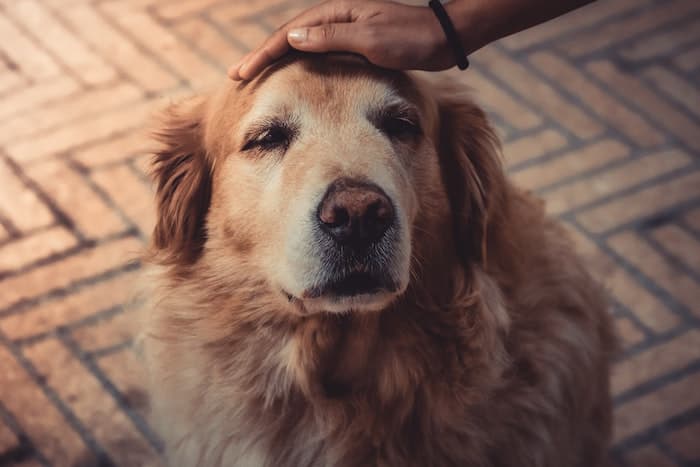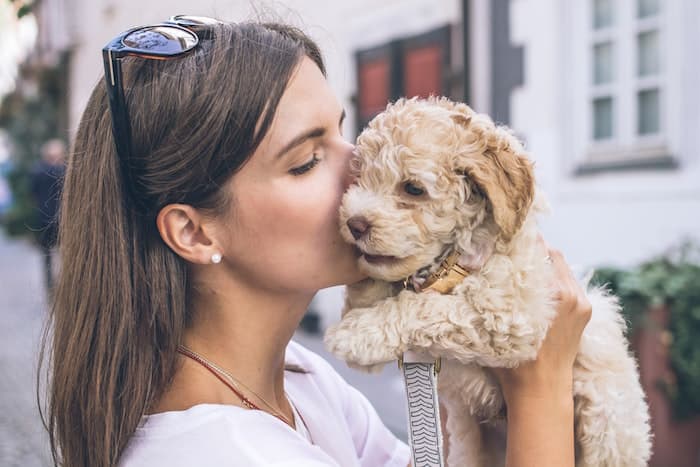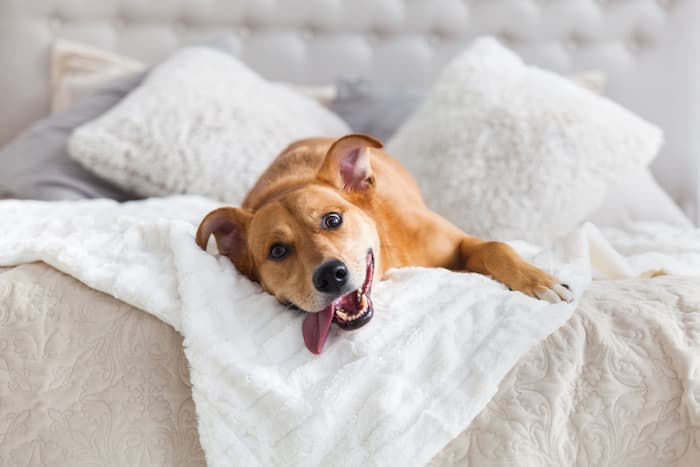Your dog is an important part of your family and you should take steps to ensure that he or she is healthy. One way to do this is by conducting regular at-home health checks. This article will explain how to conduct an at-home health check on your dog and why it is important.
What You’ll Need
To conduct an at-home health check for your dog, you will need the following supplies:
- A leash: a leash will be necessary to restrain your dog for the health check
- A mirror: a mirror will help you to see your dog’s body from all angles
- A flashlight: a flashlight will help you to see inside your dog’s mouth and ears
- A magnifying glass: a magnifying glass can be used to get a closer look at any potential problems on your dog
- Nail clippers: nail clippers will help you to cut your dog’s nails (if he or she needs them)
- Hand towel: a hand towel can be used to dry off your dog after the bath that you’ll give him or her at the end of the health check
- A notepad and pen: you’ll want to take notes during the health check, so a notepad and pen are essential
- A treat or two: a treat or two will motivate your dog to cooperate during the health check
- A soft brush: a soft brush will help you to brush away any dirt, dead skin cells, and other debris from your dog’s coat
How To Check Your Dog’s Vital Signs
The first step in conducting an at-home health check is to check your dog’s vital signs. Whether you’re monitoring Yorkie health problems or checking for overall health in a bulldog, knowing your dog’s vitals is key. You can do this by checking his or her heart rate, respiratory rate, and temperature.
To check your dog’s heart rate, place your hand on his or her chest. Keep it there for a full minute and count the number of beats you feel. Multiply this number by four to find your dog’s heart rate per minute. To check your dog’s respiratory rate, watch his or her chest as he or she breathes in and out. Count how many times his or her chest rises and falls in one minute. To check your dog’s temperature, use a digital thermometer to take his or her temperature orally, rectally, or axillary (in the armpit). The normal body temperature for dogs is between 100 and 102.5 degrees Fahrenheit.
If you notice that your dog’s vital signs are abnormal, you should contact your veterinarian as soon as possible to discuss treatment options.
How To Check Your Dog’s Eyes And Ears
The next step in conducting an at-home health check is checking your dog’s eyes and ears. You should do this regularly because both can be indicative of a wide range of canine illnesses. This process will be a little more difficult for some dogs than others. You might have to use a leash to keep your dog restrained and you’ll likely need a mirror and flashlight.
To check your dog’s eyes, hold him or her in place with the help of a leash and one hand on his or her chest. Shine the flashlight into both eyes and look for redness, discharge, cloudiness, and other abnormalities. To check your dog’s ears, use the magnifying glass to get a closer look at the ear canal. Look for redness, discharge, wax build-up, and other abnormalities.
If you see anything that looks abnormal, you should contact your veterinarian to schedule an appointment and get his or her opinion on the matter.
How To Check Your Dog’s Teeth
The next step in conducting an at-home health check is checking your dog’s teeth. Dogs should have a nice smile, which means that you should brush their teeth regularly to prevent dental problems such as canine periodontal disease. You should also check the teeth regularly to look for signs of canine oral cancer.
Use your hand towel or a washcloth to dry off your dog’s mouth, if necessary. If you have Nail clippers, clip away any hair around his or her lips so that you can see the teeth clearly. Use the magnifying glass to get a closer look at the teeth and inspect them for abnormalities.
If you see anything that looks abnormal, you should contact your veterinarian to schedule an appointment.
How To Check Your Dog’s Coat
The final step in conducting an at-home health check is checking your dog’s coat. This is a very important step because a healthy coat can be indicative of a healthy dog. You should check your dog’s coat regularly for dirt, debris, mats, and other abnormalities.
Use the soft brush to brush your dog’s coat in the direction of hair growth. Be sure to brush all areas of the coat, including the belly, chest, legs, and tail. If you find any mats or debris, use the scissors to carefully cut them out of his or her coat.
If you see anything that looks abnormal, you should contact your veterinarian to schedule an appointment.
Your dog’s health is very important. By conducting an at-home health check regularly, you can catch various problems early on before they become major issues. By checking vital signs, eyes, ears, mouth, and coat, you can understand your dog’s current health better. If you notice any abnormalities during the at-home health check, contact your veterinarian to schedule an appointment.
Related Reading



